QuestionHi Chrys,
Two weeks ago I purchased a lovebird from a petstore. He (I think) is 6 months old or less. (petstore couldn't give me an exact date) He isn't tame, the petstore said for me to get him out of his cage and hold him against me for a little while every day. When I would go to get him, I had to chase him around his cage listening to his panicky shrieks. The third day of this "taming Process" I stopped and am trying to find the right way of doing this. I had a handfed cockatiel about 10 years ago,who I just loved. I would really like to have this little bird ride on my shoulder and like being held.
I've read alot of faqs about this and the advice always starts with "if you wanted a tame bird, why didn't you find a breeder?" I couldn't find a breeder in this area and those birds always find good homes, but when I go into a pet store, you see all the behavior from kids and adults that they have to tolerate and I just wanted to give one a good home. Having said that, Please help me to start out right with this little bird. Right now, when I walk into the room, he has stopped running and hiding. I sit beside his cage alot taking to him, he chirps when I leave the room. What should be the first thing that I do to get his trust? What advice you give, I'll do my very best to follow through.
Thank you for your time and help!
Sincerely,
Victoria Frye
AnswerHi, Victoria. Thanks for posting.
First of all, 2 weeks may not be long enough for your new lovebird to have settled down in your new home. It's very stressful for a parrot to move and, depending on the bird, it could take some time for this stress to be alleviated. S/he needs to get used to it's new environment in your home, you, and what goes on inside your home.
Secondly, most parrots don't like to be "cornered" in their cages. They will fight, flight, or bite. S/he may still be frightened of you and when you put your hand/arm inside it's cage, it becomes scared to death. Most pet shop birds are afraid of fingers/hands because they've been poked and prodded at by pet store customers. Therefore, you'll need to avoid using fingers/hands for a while until the bird realizes you won't cause s/he any harm. In the meantime, let the lovebird come out of it's cage on it's own (just leave the cage door open when you can supervise it's time out of the cage), and interact with the bird while s/he is sitting on top of the cage.
Keep both wing flight feathers clipped. This will force the lovebird to rely on you for mobility and also the bird won't be able to get away from you every time you get close to it.
Once the bird is fairly comfortable when s/he is outside the cage (sitting on the top of the cage), take the bird into a neutral room with little distractions (using a perch if the bird won't get on your hand). The bird must not be able to get to/see it's cage when working with it (otherwise, s/he will try to get back to it's cage). A bird's cage is it's safety zone, it's territory, it's personal space. Place the bird down on the floor, a bed, couch, etc., and just talk with it, play with it, time for both of you to learn about each other. Spending quality time (interacting) with your lovebird is what it takes. Eventually, s/he'll will start to trust you and over time, if all goes well, will trust you to the point where you can do anything with the bird.
ALWAYS reward your lovebird for positive behavior (positive reinforcement). In other words, each and every time your lovebird does what you ask, reward s/he with a favorite treat. NEVER reward negative behavior. You must be careful here not to reward negative behavior. For example, pulling back your hand if/when the lovebird tries to bite is rewarding negative behavior. The pulling back of your hand is exactly what the lovebird wants, so s/he, in fact, got his/her way! This is hard for some people to understand and they are actually teaching their parrots negative behavior!
You seem to be off to a good start by simply talking with s/he when you sit beside the cage. The fact that the lovebird chirps when you leave the room is an indication that some bonding has begun (s/he doesn't want you to leave when it chirps when you leave the room). Go one step further and open the cage door when you are doing this. The lovebird should eventually come out of it's cage and might even interact with you. If this setup is say in your living room where you might watch TV in the evening, open the cage door and let the bird come out...s/he may surprise you and walk right on your shoulder (or at least to where your arm is)!
Little steps over time is how you will get a tame lovebird.
My website may provide more information you might need if you want to visit:
http://www.angelfire.com/falcon/birdinfo.index.html
Chrys

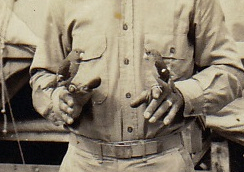 ID Birds
Question
Panama Birds
My uncle served in Panama in 1941
ID Birds
Question
Panama Birds
My uncle served in Panama in 1941
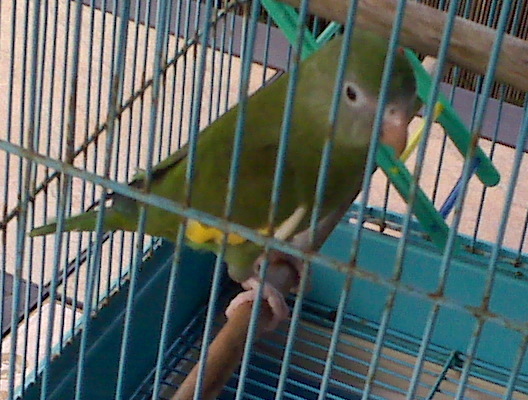 What type of parrot is this?
Question
Friendly bird
A week ago ths small parrot flew
What type of parrot is this?
Question
Friendly bird
A week ago ths small parrot flew
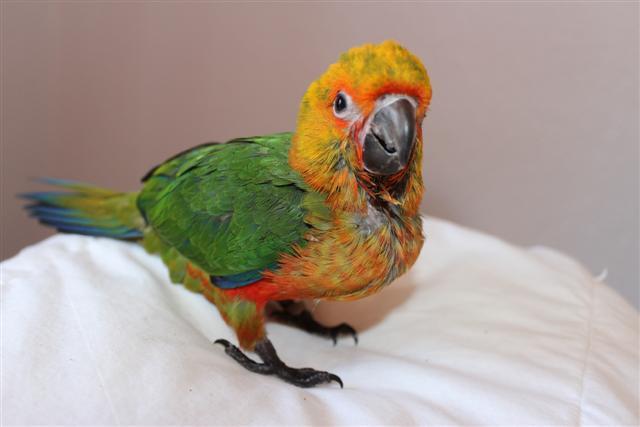 Jenday Conure Weaning?
Question
Castor the Conure
Hi
I have a 9 week o
Jenday Conure Weaning?
Question
Castor the Conure
Hi
I have a 9 week o
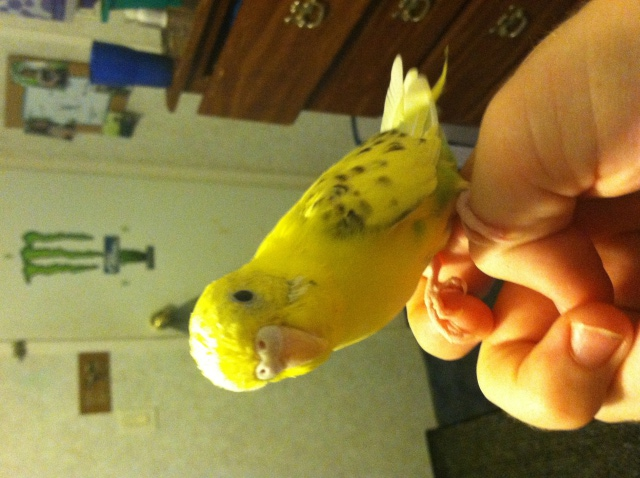 Parakeet gender
Question
Parakeet
Hi, I looked for an expert und
Parakeet gender
Question
Parakeet
Hi, I looked for an expert und
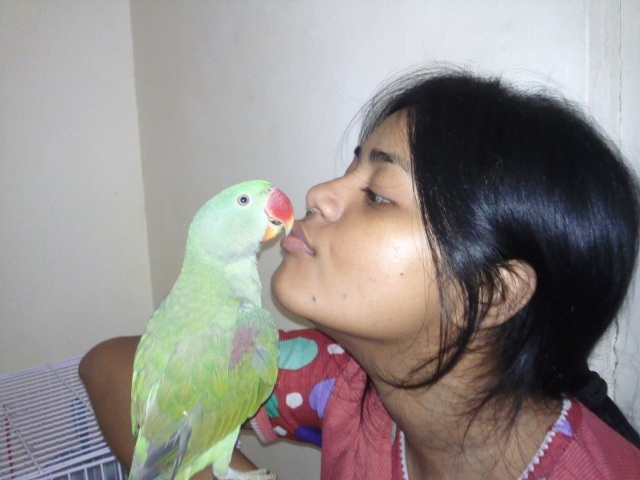 can i give my parrot chole(chana) called in hindi
Question
my little chaddi alexa
dear sir,
can give chan
can i give my parrot chole(chana) called in hindi
Question
my little chaddi alexa
dear sir,
can give chan